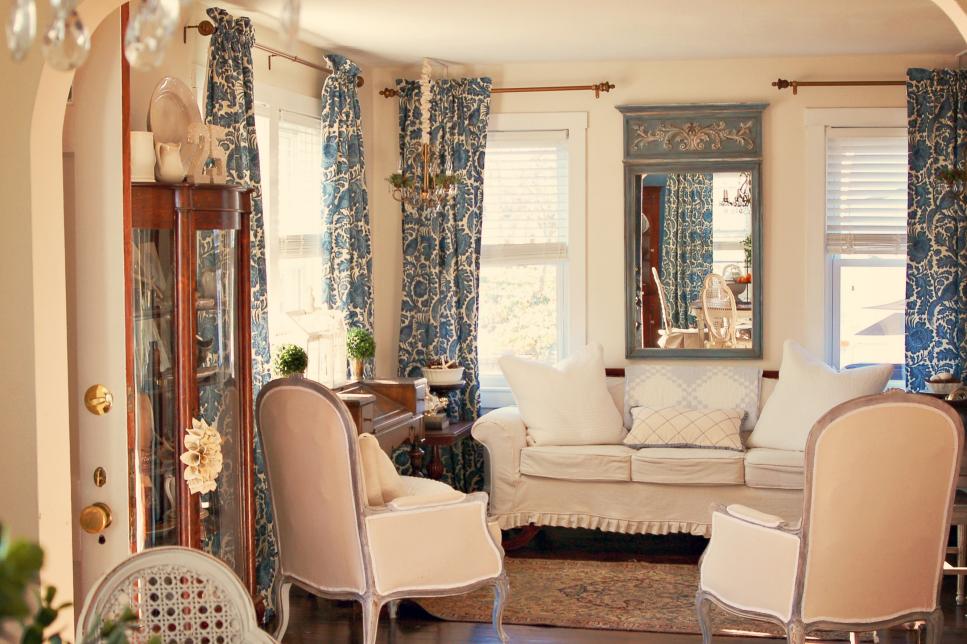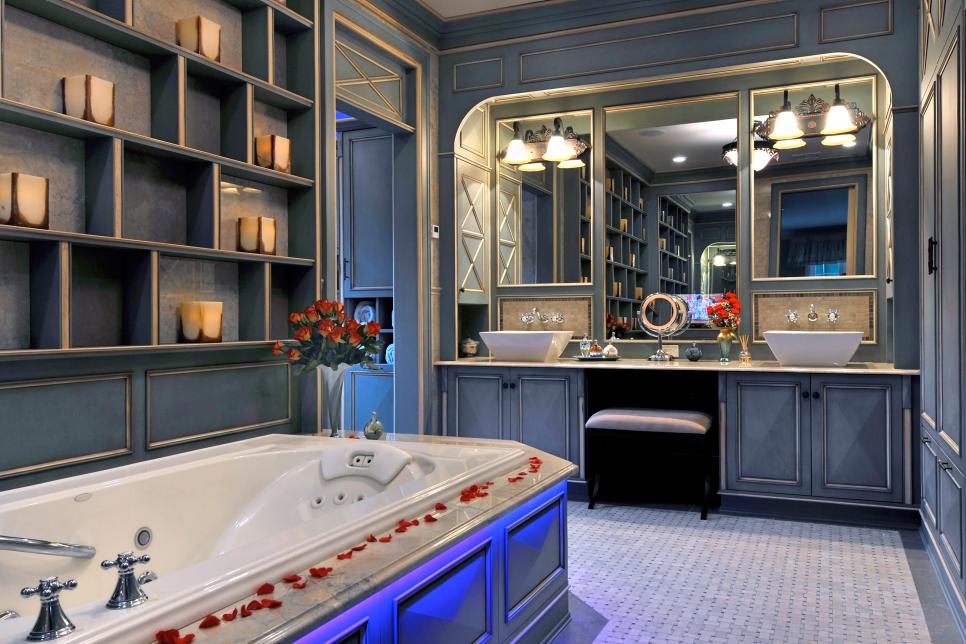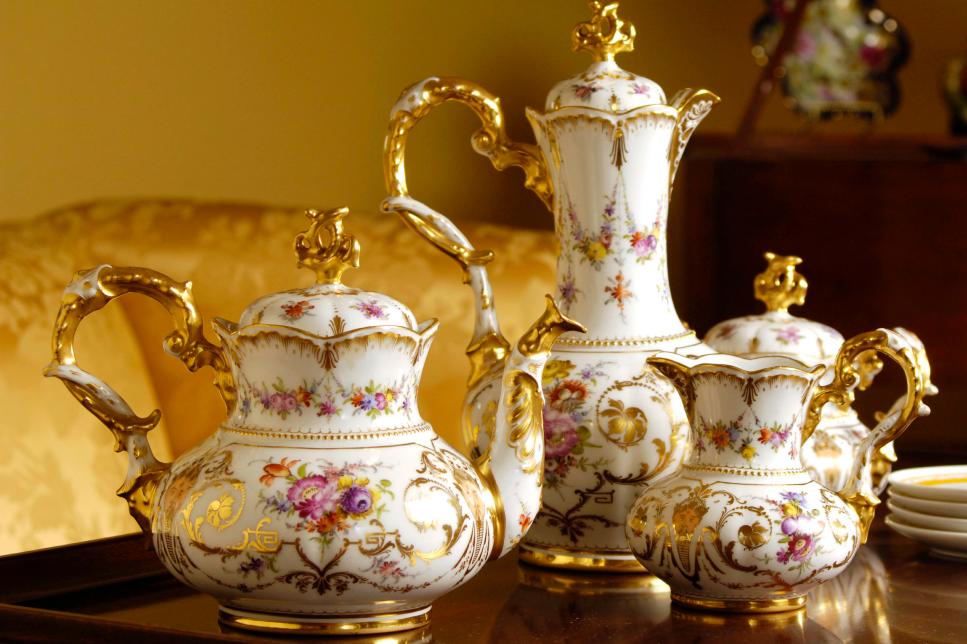
Paris Meets Provence This elegant living room joins the best of comfy French country style with advanced Parisian panache. A trumeau mirror, correctly placed between the room's two windows, visually expands the space and reflects the adjacent dining area while a set of linen-covered bergeres defines the seating area. Image courtesy of Marian Parsons, Miss Mustard Seed

Bombé Not Bombay Typical of the brassy rococo design, bomb commodes add a sexy, feminine touch to any area. All of the rage during the reign of Louis XV and his royal mistress Madame de Pompadour, rococo style could be summed up in 1 word: curves. Highly skilled furniture makers of the time, called bnistes, developed methods that allowed them to shape wood panels and cut into the serpentine types which are still common today. Image courtesy of Eloquence

Tradition Meets the 21st Century Inspired by a stay in a posh Parisian hotel, this luxurious master bathroom takes its design cues from the ornate wrought iron walls and cabinetry widespread in the south of France during the 18th century. The appearance is span but the amenities such as a radiant heated floor, a flat-screen TV concealed behind the mirror and piped-in music are 21st century. Layout by Ken Kelly

Boomerang Style American postwar prosperity in the 1950s saw a remarkable growth in the prevalence of French state -- aka provincial -- fashion as young, newly affluent families embraced a genteel way of life. Combining classic elements such as columns, cabriole legs and rosettes, French country style is fundamentally a rustic take on furnishings popular in the 18th-century courts of Kings Louis XIII, XIV, XV and XVI. Picture courtesy of Dovetail

La Cuisine Combining rusticity with refinement, French country kitchens are still function as go-to fashion for designers and homeowners alike. To get the look, opt for cabinetry that's been distressed and aged for a timeworn look. Pick handmade hardware over glossy pulls and high cabinets with a countertop that will stand the test of time like marble, granite or butcher block. Layout by James Howard

Wealth on Display We most often attribute the manufacture of silver to England and Ireland, but France has been a consumer and producer of grade silverwares. French aristocrats coveted silver for its usefulness and inherent value -- an candelabra could be sold to the metal's value. In reality, hardly any early French silver remains now because both Louis XIV and XV decreed that all silver be melted down to replenish the state's depleted coffers, for instance, good silver furnishings that formerly graced Versailles.

Luxurious Silk Silk-weaving in France began in Tours from the 15th century. From the late 1700s, nearly all production had transferred to Lyons where greater than one-third of their town's population was employed in the commerce. Consistently trendsetters, French nobles were the customer of fine woven textiles. Damask, a pattern originally invented in the Middle Ages by both Islamic and Byzantine weavers and appointed to the town of Damascus, was a favorite of French nobility who used it to decorate their houses' walls and furnishings. Picture courtesy of Thibaut

Glamorous Gilt Gilding, the process of covering an object in a thin coating of stone, is a prominent feature of French layout. An early approach, gilt objects predate the growth of French culture; early cases existed in ancient Greece, Egypt and China. Ormolu, by the French or moulu, meaning floor gold, is the process of gilding bronze decorative mounts which bnistes (cabinetmakers) utilized to decorate exquisitely crafted furnishings and clocks. Picture courtesy of Eloquence

Chic Storage An encoignure, or corner cupboard, is a useful feature of the formal French layout and its country cousin, provincial. HGTV enthusiast Tetbury uses hers to exhibit an assortment of basket-like 19th-century French bags. This encoignure's primitive design complements the area's cottage charm.

Trendy Service French porcelain has long been regarded as one of the finest on the planet. Kings and courtiers like Napoleon and Marie Antoinette sampled delicacies served on dinnerware made from the Limoges region of France. From the mid 1700s, French porcelain dominated the European marketplace, toppling the artistic direction of Germany's Meissen, the top manufacturer of this moment.

Go Country Rustic yet stylish, French provincial continues to be a favorite selection for creating a room which combines sophisticated touches with casual cloths and accessories with a timeworn patina. To create her farmhouse-style dining space, HGTV fan LuluD paired a French sideboard with whitewashed candle stands and rustic framed paintings to get a look with timeless allure.

Boiserie Panels of intricately carved wood, called boiserie, after graced formal gathering chambers throughout Europe. Created by layering hand-carved timber with applied molded or carved details, boiserie panels were often painted or gilded. When HGTV enthusiast LuluD couldn't find just the ideal headboard for her bedroom, she re-created this centuries-old look with wood trim, cast details and a carefully applied paint finish.

No comments:
Post a Comment